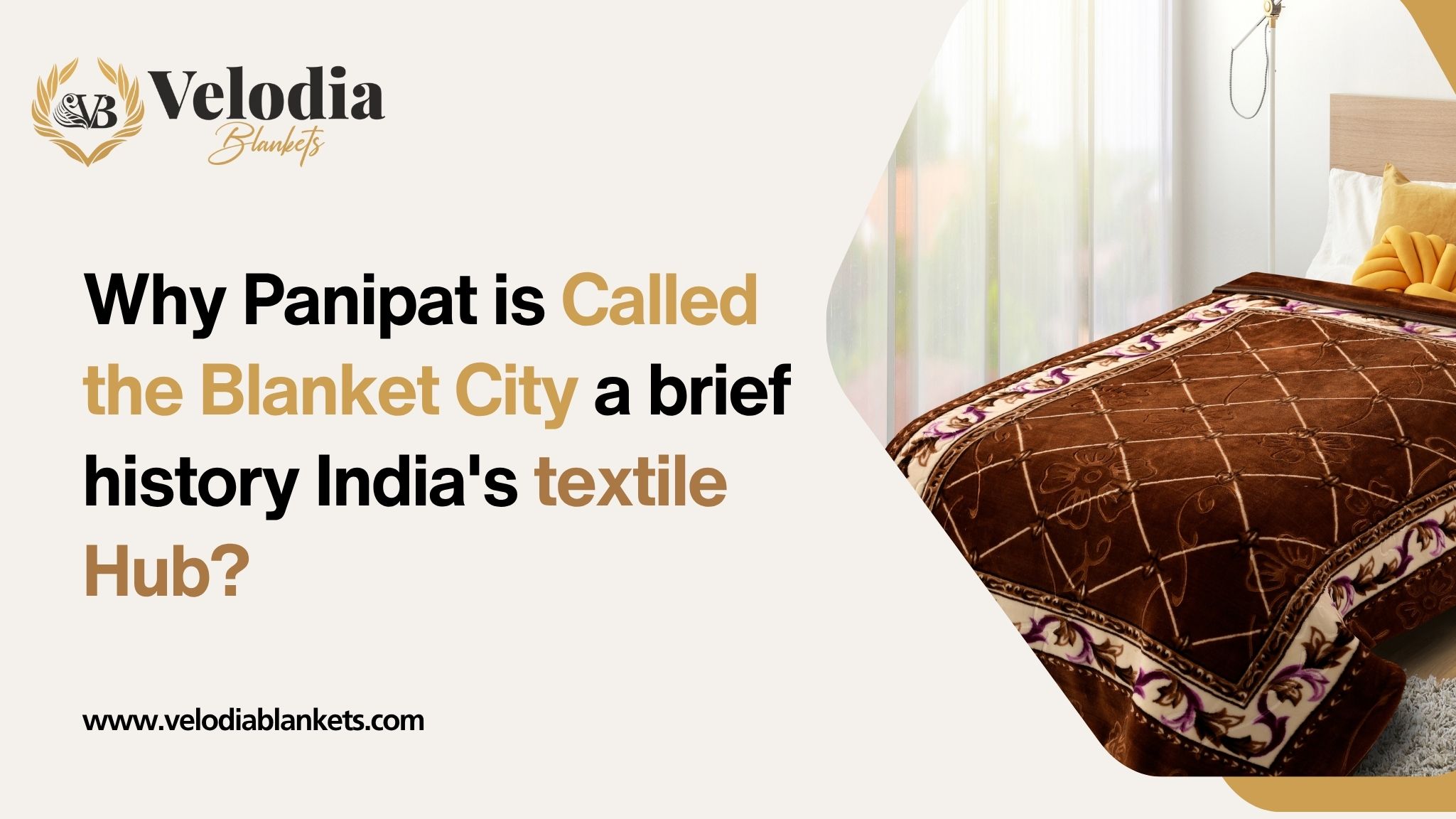
Why Panipat Is Called the Blanket City: A Brief History of India’s Textile Hub
Travel through North India, and you’ll hear one name over and over when it comes to blankets—Panipat. Known as the “Blanket City of India,” Panipat has earned its reputation as the country’s leading hub for blankets, bedding, and textiles. But how did a city once famous for historic battles become the undisputed capital of blankets and home textiles in India? Let’s unravel the story.
The Origins: A Tradition of Weaving
Panipat’s textile legacy isn’t new—it dates back centuries. Positioned strategically near Delhi and blessed with access to skilled labor, Panipat developed as a center for handlooms and weaving as early as the 19th century. Local families passed down weaving techniques through generations, gradually building a community of skilled artisans and craftsmen.
The Rise of Blanket Manufacturing
While Panipat was always known for rugs and durries, its big leap came post-independence, especially from the 1970s onward. Local entrepreneurs saw an opportunity in the growing demand for affordable, warm blankets—especially for government supply contracts, railways, and defense.
By the 1980s and 90s, Panipat had hundreds of small and medium factories running day and night, producing woolen, shoddy, and later, mink blankets on a massive scale. The city’s output quickly outpaced other textile towns, cementing its status as India’s blanket hub.
Innovation and Expansion
Panipat’s manufacturers didn’t just stick to old methods. They rapidly adopted new machinery, imported advanced looms, and kept pace with global trends. With the introduction of synthetic fibers and mink technology, the city moved from basic woolen blankets to luxurious, vibrant mink blankets—now a top seller across India and abroad.
Today, Panipat’s textile industry supplies everything from blankets and bedsheets to towels and upholstery to every corner of India and exports to over 50 countries. From small workshops to sprawling factories like Velodia Blankets, the city has become a powerhouse of innovation and scale.
Why “Blanket City”?
- Sheer Volume: Panipat produces millions of blankets annually, supplying government agencies, hotels, disaster relief programs, and households.
- Employment Engine: The industry provides jobs to thousands—from skilled weavers to packers and logistics teams.
- Diversity: Whether you want basic utility blankets or designer mink blankets, Panipat offers endless variety.
- Affordable Quality: By reusing fibers (shoddy) and mastering bulk production, Panipat delivers quality at competitive prices, making it a favorite for wholesalers and retailers.
The Modern Era: Sustainability and Growth
Despite facing challenges like raw material price fluctuations and global competition, Panipat’s blanket industry continues to evolve. Manufacturers now focus on eco-friendly processes, recycled fibers, and value-added products to meet modern buyer expectations.
Brands like Velodia Blankets uphold this tradition—combining Panipat’s legacy craftsmanship with new designs and strict quality control, keeping the city’s reputation alive and thriving.
Conclusion
Panipat isn’t just the Blanket City by chance—it’s a title earned through decades of hard work, innovation, and community spirit. The next time you wrap yourself in a warm mink blanket or spot a stack of cozy throws in a store, there’s a good chance it started its journey in the looms of Panipat.
Want to experience the quality and comfort of Panipat-made blankets?
Contact Velodia Blankets for wholesale, retail, or bulk orders, and become part of India’s proud textile tradition.
Velodia Blankets – Proudly Made in Panipat, the Blanket City of India.





Comments are closed